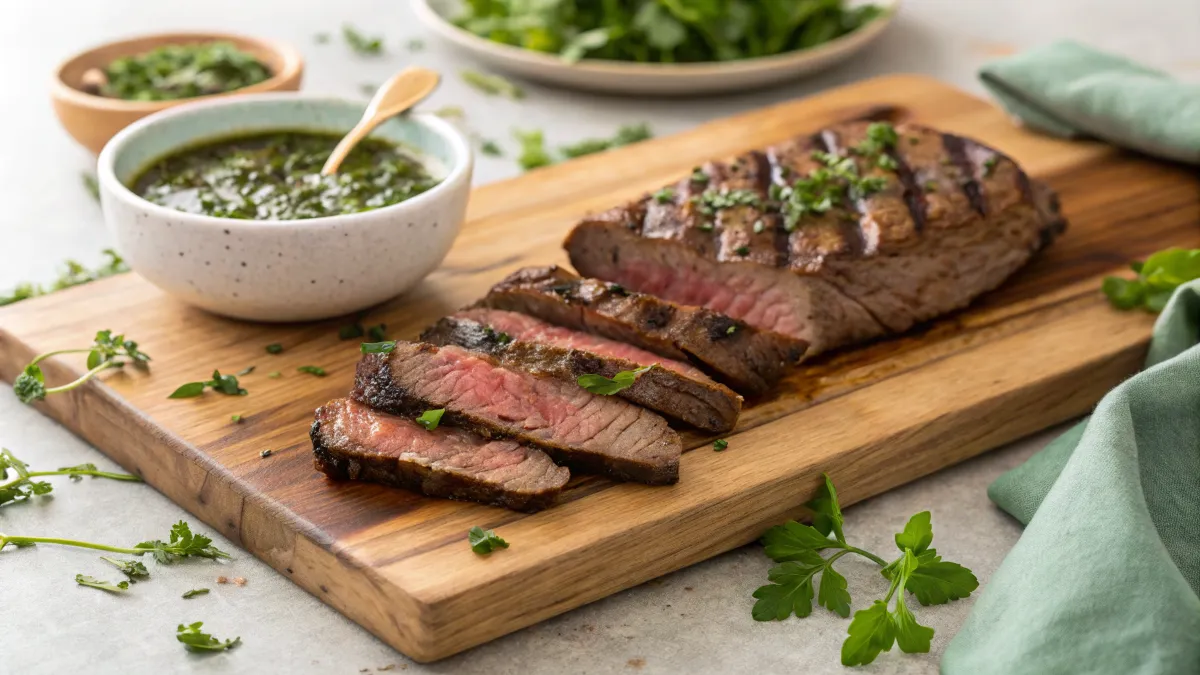Flap meats are an underrated and versatile cut of beef that’s loved by chefs and home cooks alike. It’s known for its rich flavor, affordability, and adaptability to various recipes. In this guide, we’ll cover everything about flap meats from understanding its origins and unique qualities to cooking methods, recipes, and frequently asked questions.
Whether you’re looking for ways to grill it to perfection or wondering how it compares to other cuts, this comprehensive guide will help you make the most of this beefy treasure.
Table of Contents
Flap Meat
What is Flap Meat?
Flap meat, often referred to as bavette steak or sirloin tip, is a thin, long cut from the bottom sirloin of the cow. It’s prized for its deep, beefy flavor and slightly coarse texture, making it ideal for marinating and grilling. While it’s not as tender as premium cuts like filet mignon, proper preparation ensures it remains juicy and flavorful.
Why is Flap Meat Popular in Cooking?
Flap meat is loved for its versatility. It works beautifully in a variety of dishes, from tacos to stir-fries. Unlike more expensive cuts, it absorbs marinades exceptionally well, allowing cooks to experiment with different flavor profiles. Additionally, it’s easy to cook, making it perfect for both beginners and experienced chefs.
Nutritional Benefits of Flap Meat
Besides being delicious, flap meat is packed with nutrients. It’s high in protein, which helps in muscle building and repair. It’s also a good source of iron, zinc, and B vitamins, which support energy production and overall health. For those on a high-protein or low-carb diet, it’s a great choice.
Understanding Flap Meat Cuts
Where Does Flap Meat Come From?
Flap meat is cut from the bottom sirloin, located near the flank and skirt steak sections of the cow. Its position gives it a bold flavor and a slightly coarse texture, which is perfect for marinating and quick cooking methods. The muscle fibers in this cut run long and parallel, contributing to its characteristic chewiness when not sliced properly.
Differences Between Flap Meats and Similar Cuts
It’s easy to confuse flap meat with other thin beef cuts like skirt steak and flank steak. However, there are notable differences:
- Skirt steak is thinner and has more pronounced marbling, which results in a slightly juicier texture.
- Flank steak is leaner, with less fat, and tends to be tougher unless it’s marinated or tenderized.
- Flap meat, on the other hand, offers a balance it’s flavorful and moderately tender while being budget-friendly.
To learn more about how these cuts compare, check out Food Network’s detailed guide to steak cuts.
How to Choose High-Quality Flap Meat
Selecting the right cut is crucial. Look for pieces with visible marbling, as this ensures juiciness and flavor. Avoid overly lean cuts, as they can become dry when cooked. When purchasing from a butcher, ask for sirloin tip or bavette steak to avoid confusion with other cuts. For more buying tips, visit Bon Appétit’s guide to beef cuts.
Cooking Flap Meats Perfectly
Best Cooking Methods for Flap Meats
Flap meat is incredibly versatile and thrives with high-heat cooking methods. Popular options include:
- Grilling: Achieve a smoky char and rich flavor by grilling over direct heat for 3-5 minutes per side.
- Broiling: Use your oven’s broiler to cook flap meat evenly, locking in its juices.
- Stir-Frying: Slice thinly against the grain and cook quickly in a hot wok for flavorful stir-fries.
For grilling enthusiasts, Taste of Home’s grilling tips provide helpful advice for perfect results.
Tips for Marinating Flap Meat for Maximum Flavor
Marination is key to tenderizing flap meat and enhancing its flavor. Use acidic ingredients like citrus juice or vinegar combined with soy sauce, garlic, and spices. Let the meat sit in the marinade for at least 2 hours or overnight for best results. For inspiration, try BBC Good Food’s collection of marinades.
Common Mistakes to Avoid When Cooking Flap Meat
- Skipping the marinade: Without it, the meat may feel too chewy.
- Overcooking: Flap meat is best cooked to medium-rare or medium to maintain its juiciness.
- Slicing incorrectly: Always cut against the grain to shorten the muscle fibers and ensure tender bites.
For step-by-step guidance on cooking techniques, visit Epicurious’ meat preparation tips.
Flap Meat Recipes and Pairings
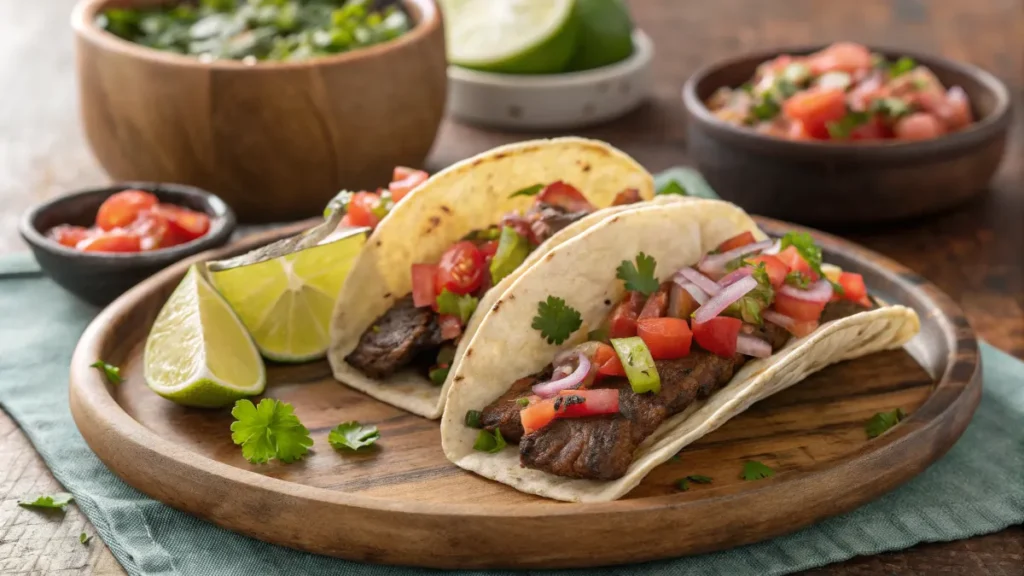
Quick and Easy Flap Meat Recipes
Flap meat is a fantastic ingredient for creating quick, flavorful meals. Its rich, beefy taste makes it a favorite for both simple and elaborate dishes. Here are two must-try recipes:
- Grilled Flap Meat with Chimichurri Sauce: This classic pairing highlights the meat’s robust flavor with a zesty, herbaceous sauce. For a step-by-step guide, check out Taste of Home’s grilling recipes.
- Asian-Inspired Stir-Fry: Thinly sliced flap meat cooks quickly in a hot wok. Toss it with soy sauce, garlic, and vegetables for a wholesome dinner in minutes.
For more recipe ideas, explore Delish’s beef recipes.
Side Dishes That Pair Well with Flap Meats
A well-prepared flap meat dish deserves equally delicious sides. Popular choices include:
- Garlic Mashed Potatoes: Their creamy texture balances the bold flavors of the meat.
- Roasted Vegetables: A mix of bell peppers, zucchini, and onions complements grilled or broiled flap meat.
- Mexican Rice or Corn Salsa: These are excellent for tacos or fajitas made with flap meat.
Flap Meats as an Ingredient in Tacos and Wraps
Flap meat shines in tacos and wraps thanks to its ability to soak up marinades. Slice it thinly and pair it with toppings like guacamole, pico de gallo, and shredded cheese. If you’re looking for more taco inspiration, check out Bon Appétit’s guide to tacos.
Flap Meats FAQs
Is Flap Meat Tender or Tough?
Flap meat falls somewhere in between it’s not as tender as a ribeye but isn’t as tough as flank steak. Proper cooking methods, like marinating and slicing against the grain, can significantly enhance its tenderness.
Can Flap Meats Be Used in Stews or Braises?
Yes, flap meat works well in slow-cooked dishes. Its beefy flavor deepens during long cooking processes, making it an excellent addition to stews or braises.
How Long Should You Cook Flap Meat?
The cooking time for flap meat depends on the method:
-Grilling: 3–5 minutes per side for medium-rare.
-Broiling: 6–8 minutes total, flipping halfway through.
-Stir-frying: Just 2–3 minutes for thinly sliced meat.
For more tips on cooking times and methods, explore BBC Good Food’s meat preparation guides.
Storage and Sustainability
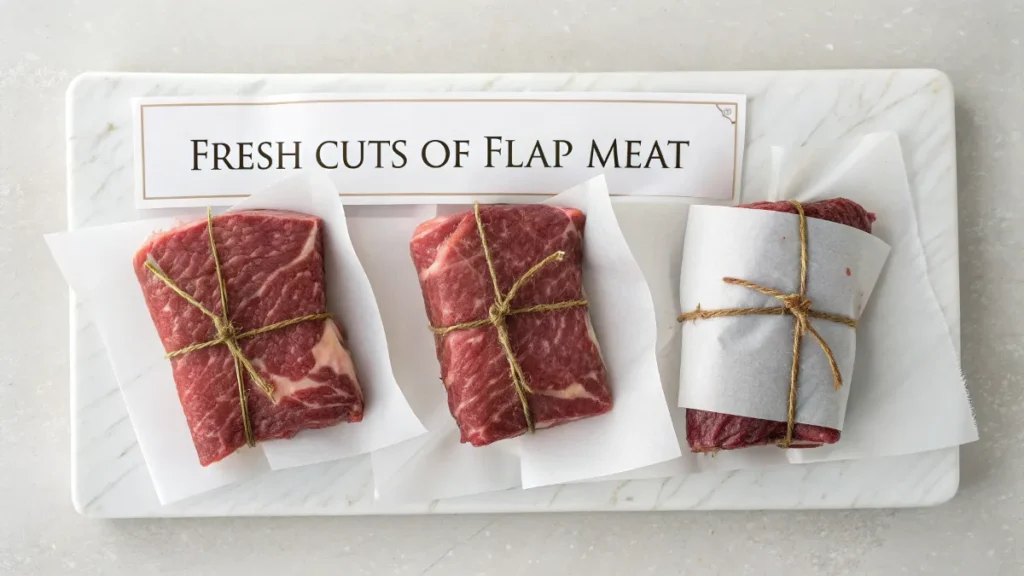
How to Store Flap Meats Correctly
Proper storage of flap meat ensures its freshness and quality for cooking. Follow these tips:
- Refrigeration: Store fresh flap meat in an airtight container or tightly wrapped in plastic. Use it within 3-5 days for the best taste.
- Freezing: For longer storage, wrap the meat in freezer-safe plastic or aluminum foil. Place it in a zip-top bag to prevent freezer burn. Properly frozen, flap meat can last up to 6 months.
- Defrosting: Thaw frozen meat in the refrigerator overnight. Avoid leaving it at room temperature to maintain safety.
For detailed storage advice, explore America’s Test Kitchen’s meat storage tips.
Is Flap Meat an Environmentally Sustainable Choice?
Flap meats, being a less common cut, often aligns with sustainability efforts. It utilizes a part of the cow that might otherwise be overlooked, reducing waste. Choosing responsibly sourced beef, such as grass-fed or locally raised options, further supports environmental goals. Many butchers and suppliers now prioritize ethical farming practices, making it easier to make eco-conscious choices.
Comparing Flap Meats Across Cultures
How Different Cuisines Use Flap Meats
Flap meat is loved across various culinary traditions for its adaptability. For example:
- Mexican Cuisine: It’s a staple in tacos, fajitas, and carne asada, where it’s marinated with spices and lime.
- Korean BBQ: Thinly sliced and cooked over open flames, flap meat absorbs marinades like soy, sesame oil, and garlic beautifully.
- French Cooking: Known as bavette, this cut is often seared and served with a rich shallot sauce.
Regional Names and Availability
Flap meat is referred to by different names in various regions. In the U.S., it’s commonly called sirloin tip or bavette steak. In France, it’s simply bavette. Although less common in grocery stores, specialty butchers or online suppliers often carry this cut.
For inspiration on incorporating this cut into global dishes, check out Epicurious’ guide to international beef recipes.
Key Tips for Buying Flap Meats
What to Look for at the Butcher Shop
When purchasing flap meats, pay attention to its color and marbling. Look for a bright red hue, which indicates freshness. A moderate amount of marbling is essential for flavor and tenderness. Avoid cuts that appear grayish or have an excessive amount of fat. Additionally, always ask the butcher to confirm the cut is bavette steak or sirloin tip to avoid confusion with other similar cuts like skirt steak or flank steak.
Shopping locally at a butcher shop can often guarantee better quality. Many butchers source their beef from trusted farms, ensuring a more consistent product.
Cost Considerations and Value for Money
Flap meat is often more affordable than premium cuts like ribeye or filet mignon, making it a budget-friendly option for families. While prices can vary depending on the source and quality, flap meat provides excellent value because of its versatility and rich flavor. It’s a great choice for feeding a crowd without breaking the bank.
For additional insights on selecting budget-friendly cuts, check out Delish’s tips on beef shopping.
Why Flap Meats Deserves a Spot in Your Kitchen
Flap Meat’s Versatility in Everyday Cooking
Flap meat is one of the most versatile cuts of beef, making it a perfect choice for countless dishes. Whether you’re grilling it for a summer barbecue, tossing it into a stir-fry, or using it as the star ingredient in tacos, this cut adapts to almost any cooking style. Its bold flavor and ability to absorb marinades make it a must-have in the kitchen.
Making the Most Out of This Underrated Cut
Though it may not be as famous as other cuts, flap meat shines when given the right treatment. With proper marination and preparation, it delivers a taste and texture that rival more expensive options. Plus, its affordability makes it an excellent choice for home cooks who want to create delicious meals without overspending.
If you’ve never cooked with flap meat before, now is the time to try. You’ll quickly see why chefs and food enthusiasts alike have made it a favorite.
Flap Meats in Specialty Diets
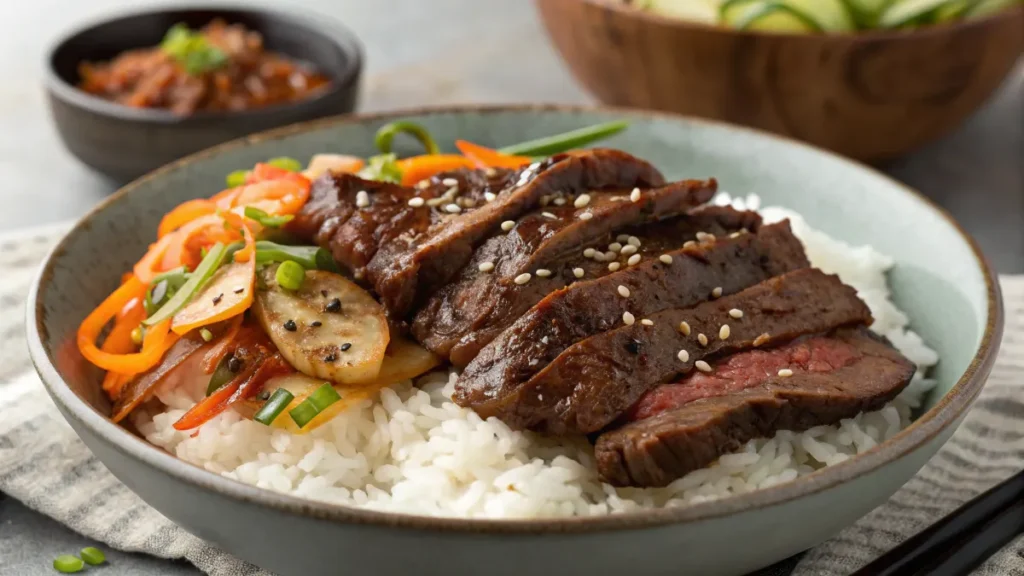
Flap meat is a versatile ingredient that fits into several dietary plans:
- Low-Carb Diets: Due to its high protein content and low carbohydrates, flap meat is ideal for keto and Atkins-style diets. Grill it and pair with roasted veggies for a complete low-carb meal.
- High-Protein Diets: Its rich protein profile makes it a favorite among athletes and fitness enthusiasts.
- Gluten-Free Meals: As a naturally gluten-free ingredient, flap meat works perfectly in recipes free from processed fillers.
Internal link placement: Include a hyperlink to an article on keto-friendly recipes, e.g., “Looking for more keto recipes? Check out our keto air fryer recipes“.
Innovative Flap Meats Recipe Ideas
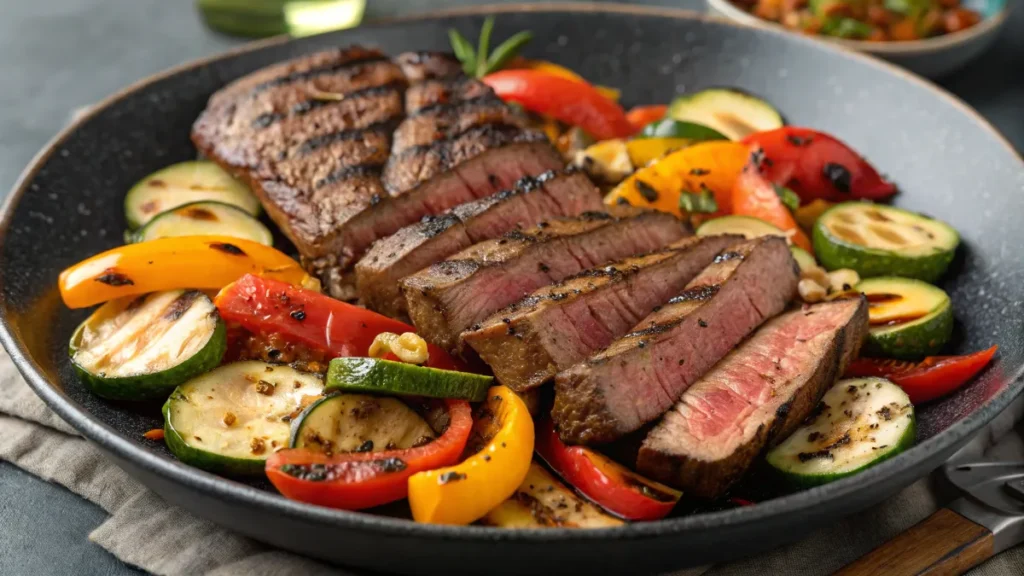
Flap meat’s versatility allows for endless creative dishes. Here are a few ideas to inspire your next meal:
- Stuffed Flap Meat Rolls: Flatten the meat, layer with spinach and feta, then roll it up and bake.
- Flap Meats Pho: Add thin slices of flap meat to a hot Vietnamese-style broth for a comforting bowl of pho.
- Bulgogi-Inspired Flap Meats: Marinate in soy, sugar, sesame oil, and garlic, then cook on a grill or stovetop for a Korean twist.
Internal link placement: Link to a global recipe guide, e.g., “Explore more world-inspired recipes like our beef bulgogi recipe“.
Conclusion
Flap meat is a true culinary gem. Its bold flavor, affordability, and versatility make it an essential ingredient for home cooks and professionals alike. Whether you’re grilling it for tacos, marinating it for Asian dishes, or slow cooking it for stews, this underrated cut deserves a spot in your kitchen. By following the tips and recipes in this guide, you’ll master the art of cooking with flap meats in no time.

